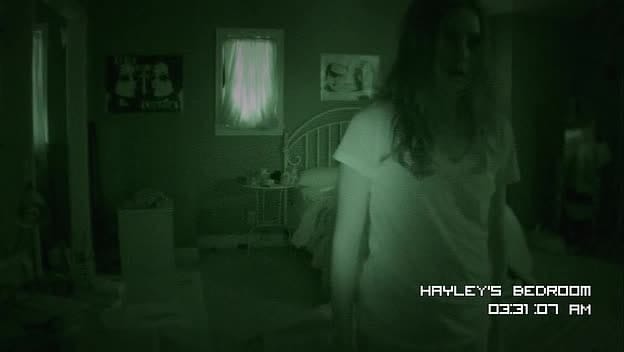Immaculate, the latest horror-thriller starring Sydney Sweeney, dives deeply into the dark undercurrents of religious devotion, repression, and the complexities of female experience within a patriarchal structure. Directed by Michael Mohan, this film is not just another entry in the horror genre but a nuanced exploration of religion’s impact on women’s autonomy, framed by eerie settings and psychological tension. In this article, we’ll look at the thematic heart of Immaculate, unpacking its genre influences, its layered commentary on women and religion, and why it stands out in contemporary horror cinema.

A Genre Bender
Set in a remote Italian convent, Immaculate follows Cecilia (played by Sweeney), a young woman invited to join a group of nuns for what appears to be an introspective, religious retreat. Soon after her arrival, however, she begins to notice strange occurrences and undergoes a series of disturbing encounters that make her question her safety and sanity. This isolated setting and unfolding mystery place Immaculate within the psychological horror genre, a sub-genre that thrives on exploring the dark side of the mind and the unseen forces that manipulate it.
The film’s tone and tension are reminiscent of classic psychological horror films like Rosemary’s Baby and The Others, using slow-building dread over shock value. Through Cecilia’s experience, Immaculate takes cues from “nunsploitation” films of the 1970s, which explored themes of religious extremism and often the repression of sexuality within convents. However, unlike the more sensationalist nunsploitation films, Immaculate uses these elements to probe at deeper existential and feminist themes.
Women and Religion: A Battle for Autonomy
A central theme in Immaculate is the relationship between women and religious institutions, especially in contexts where faith is wielded as a form of control. Cecilia arrives at the convent with genuine faith and a desire for connection. However, the convent quickly becomes a microcosm of broader patriarchal authority that often characterizes traditional religious institutions. The film carefully examines how these institutions, while often promoting ideals of purity and piety, can paradoxically entrap women in roles that limit their freedom and impose shame around natural human desires and instincts.
As Cecilia’s experiences grow increasingly unnerving, the film exposes a deep hypocrisy within the convent. On the surface, the convent represents a sanctuary for Cecilia to escape worldly sin, but beneath this facade is a realm governed by oppressive rules and unspoken fears. The nuns themselves reflect varying degrees of acceptance or resistance to this authority, with some embracing it out of loyalty or fear, and others, like Cecilia, chafing against it. This duality reveals the complex relationship women have with religious institutions, as they are often both agents of their own faith and subjects of institutional repression.

Psychological Manipulation and Gaslighting
A striking feature of Immaculate is how it captures the psychological toll on Cecilia, leading to themes of gaslighting and emotional control. Cecilia starts noticing details that don’t add up—cryptic messages, suspicious behaviors, and strange apparitions. When she voices her concerns, the nuns and authority figures in the convent quickly dismiss her, questioning her mental stability and accusing her of over-imagination. This tactic of downplaying her experiences mirrors real-world dynamics, where women’s voices are often dismissed, especially in matters that challenge traditional or authoritative norms.
This gaslighting effect is key to psychological horror, where the protagonist’s reality is questioned, and they are led to doubt their own perceptions. It’s through this lens that Immaculate critiques not only the convent’s system but also broader societal patterns of manipulation and control faced by women. Cecilia’s sense of paranoia and her increasing isolation create a suffocating experience, drawing audiences to empathize with her as she questions the true nature of her environment.
Female Sexuality and Bodily Autonomy
One of the most powerful threads in Immaculate is its exploration of female sexuality and the struggle for bodily autonomy within the confines of religious orthodoxy. In the convent, Cecilia encounters teachings that emphasize chastity, obedience, and sacrifice, often equating feminine desire with sin. This puritanical environment reflects the Madonna-Whore dichotomy, an enduring narrative in which women are either seen as pure and virginal or sinful and corrupting.
Cecilia’s own feelings and attractions become suspect, and the nuns’ efforts to control her desires parallel how religious institutions have historically attempted to regulate women’s bodies. As her situation becomes more dire, the film implies that repressing natural instincts can lead to violence and a form of psychological “possession,” challenging the very idea of purity that the convent strives to uphold. Sweeney’s portrayal of Cecilia captures this internal conflict masterfully, showing the slow breakdown of a woman’s psyche under impossible moral expectations.

Religious Iconography and Symbolism
Immaculate uses religious iconography not only to reinforce its thematic underpinnings but also to challenge the viewer’s perception of holiness and sin. The statues, crucifixes, and gothic architecture serve as constant reminders of the power the Church holds within the convent, creating an atmosphere that feels as much haunted by tradition as by any supernatural force. These symbols become increasingly ambiguous as Cecilia’s isolation grows; what first appears as sacred and comforting begins to feel ominous and even threatening.
Interestingly, the film portrays Cecilia’s relationship with her own beliefs as complex. She initially sees these symbols as representations of her faith, but as she unravels the convent’s darker secrets, they become emblems of control, blurring the lines between what is truly good or evil. This shift in perspective forces viewers to question the conventional representations of religious iconography in horror and its tendency to equate piety with safety.
A Commentary on Modern Faith and the Female Experience
At its core, Immaculate offers a modern critique of faith as it relates to personal freedom and feminine identity. Cecilia’s journey highlights the claustrophobic aspects of religious orthodoxy while still treating her spirituality as a valid part of her character. Rather than demonizing religion outright, the film suggests that religious practices, when taken to extremes, can become instruments of control. It’s a testament to the filmmakers’ nuanced approach that Cecilia’s personal faith is not invalidated by her experience; instead, it’s the institution’s authoritarianism that ultimately comes into question.
Through a horror lens, Immaculate addresses the emotional and psychological challenges women face when navigating faith in environments where institutional dogma suppresses individual expression. The narrative speaks to a generation increasingly questioning the role of organized religion in their lives, especially as it intersects with issues of gender and identity. The movie ultimately suggests that faith should be a source of empowerment rather than repression and that, in seeking personal meaning, one must sometimes challenge the structures that attempt to define it for them.


Immaculate as a Modern Feminist Horror
Sydney Sweeney’s powerful performance brings Cecilia’s journey to life, anchoring Immaculate as a thoughtful, compelling entry in feminist horror. By weaving themes of autonomy, gaslighting, repression, and sexuality, the film engages with complex questions around women’s agency in the face of institutional authority. Immaculate isn’t just a horror story set in a convent; it’s a haunting exploration of faith and freedom, a critique of the constraints religion can place on women, and a call for reclaiming one’s identity in the face of overwhelming pressure to conform.
Immaculate stands out as a modern feminist horror that doesn’t shy away from examining the darker intersections of gender and belief. It leaves its audience with an unsettling realization that the horror faced by Cecilia—while supernatural in part—is deeply rooted in the real-life experiences of many women, both in and outside religious settings. By confronting these issues, the film provides a cathartic yet thought-provoking experience that will resonate long after the credits roll.









